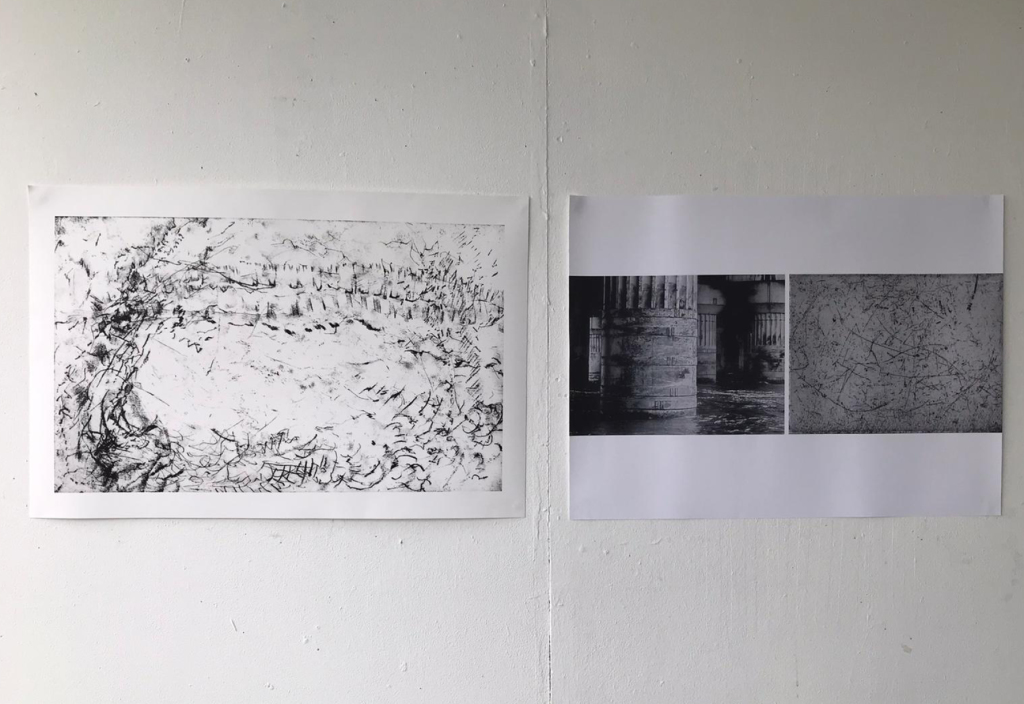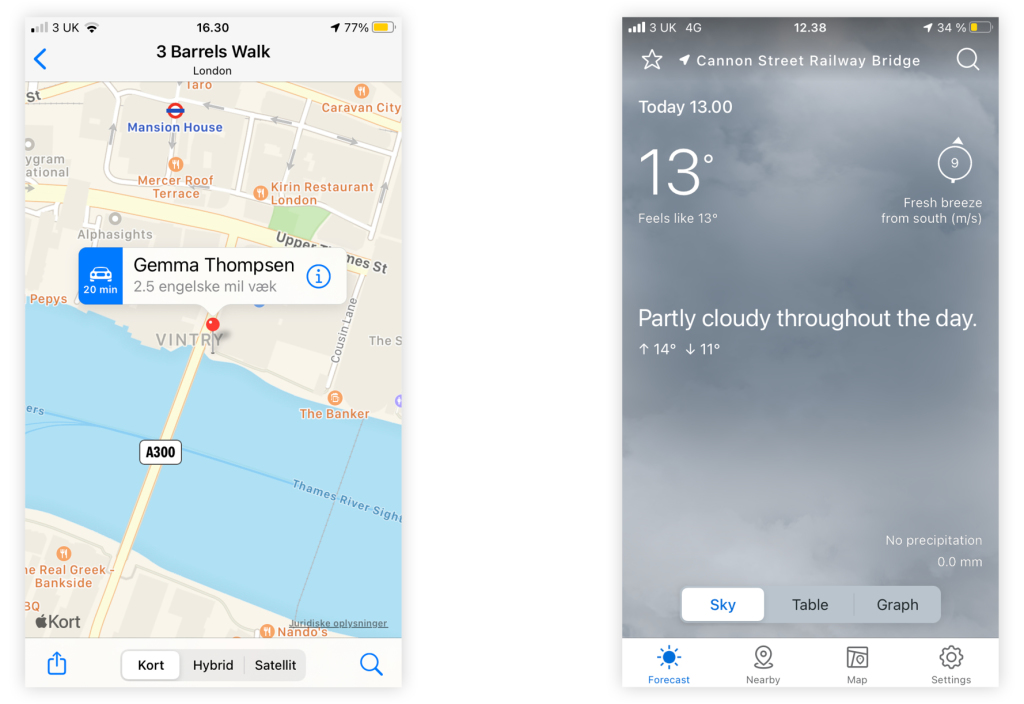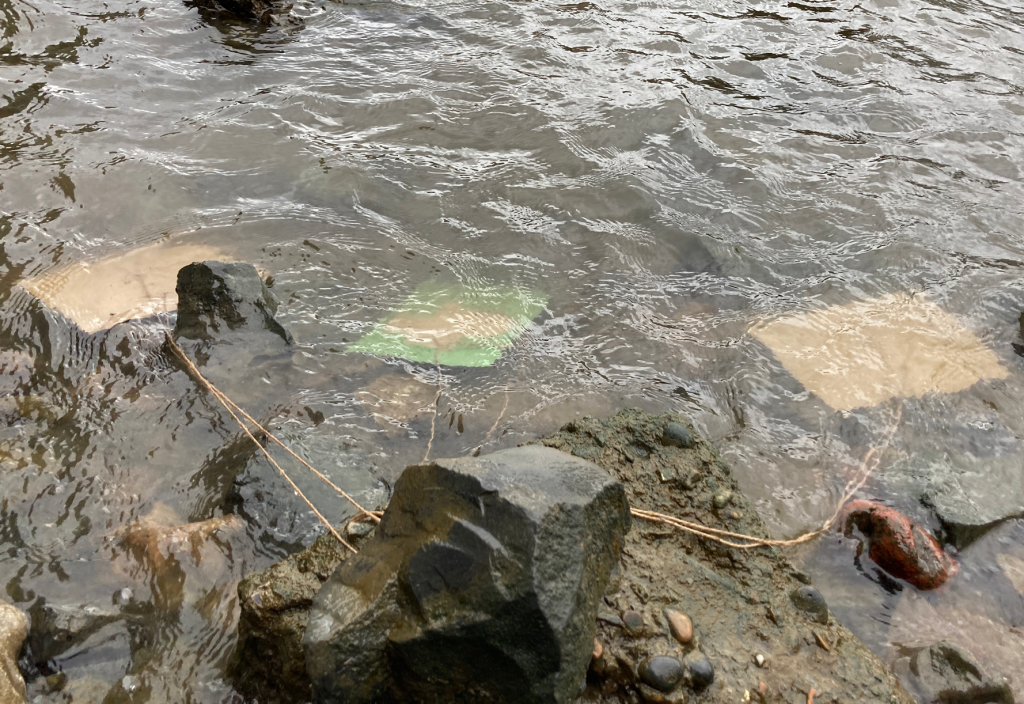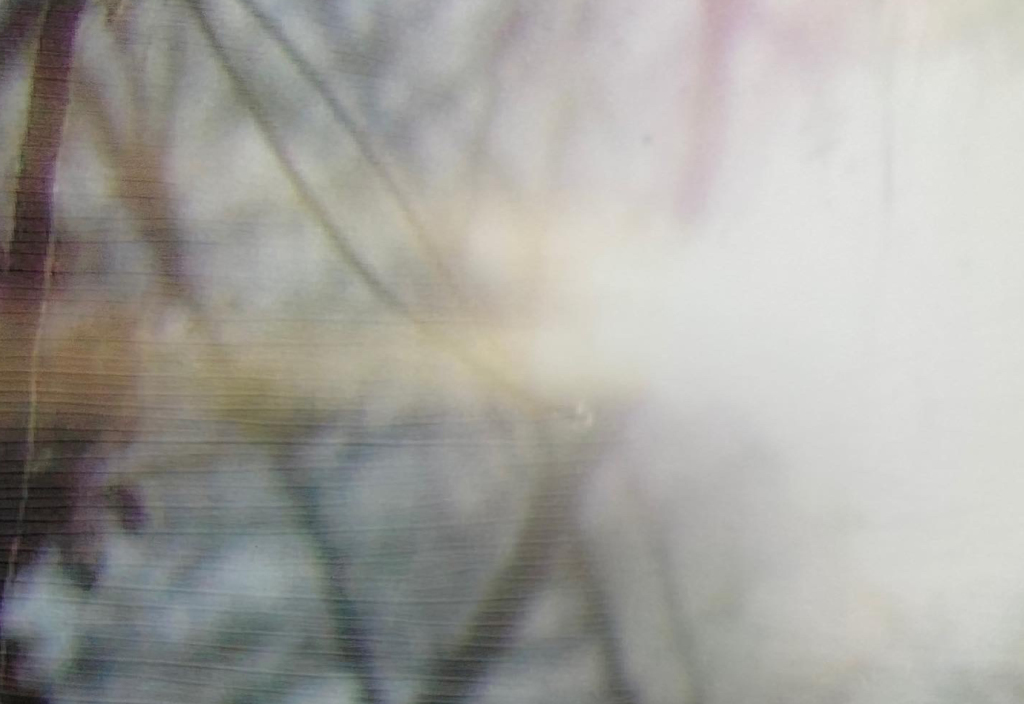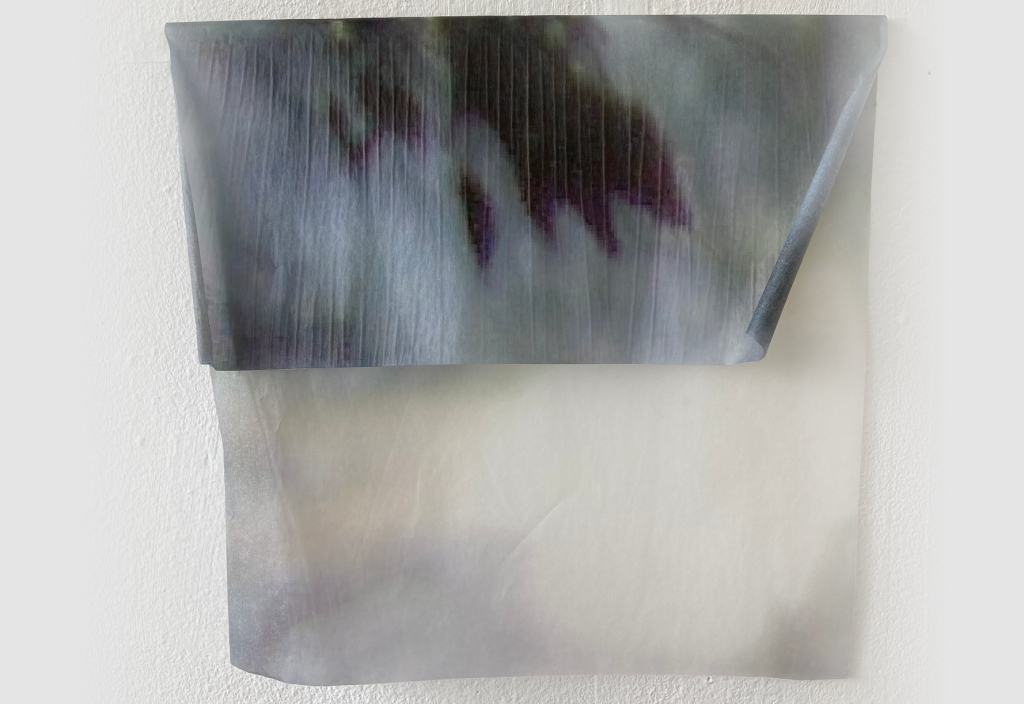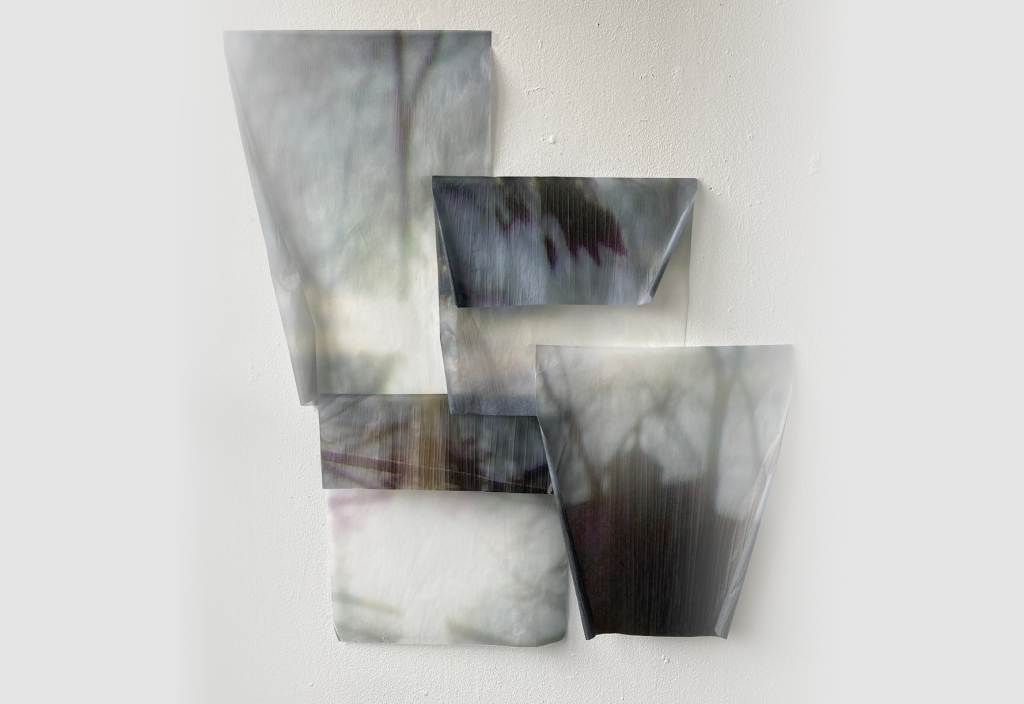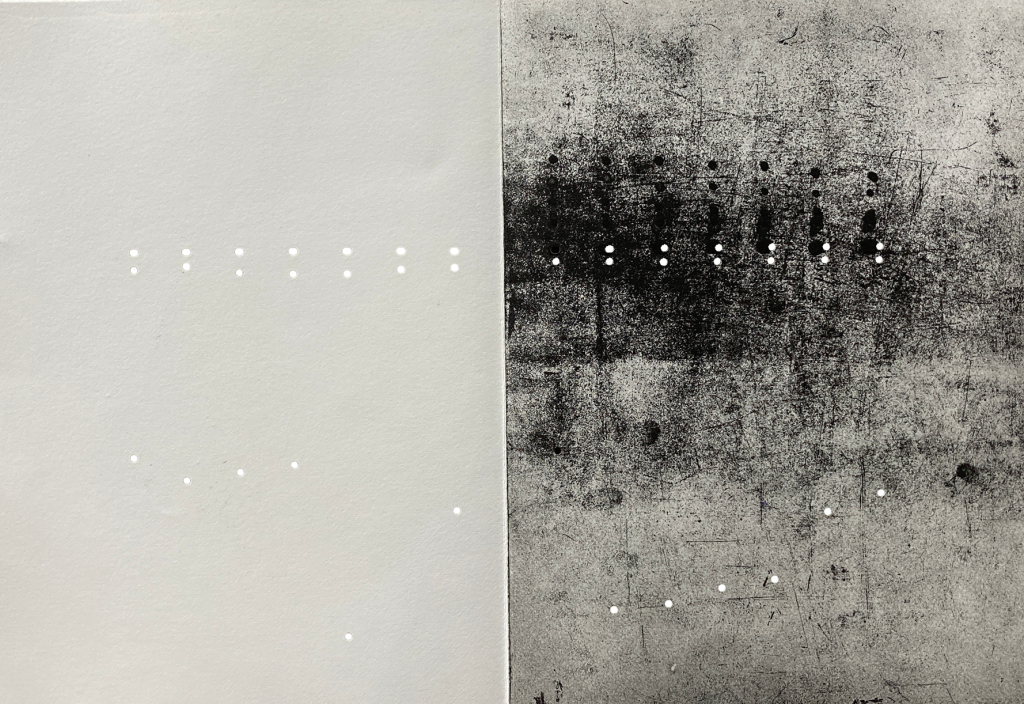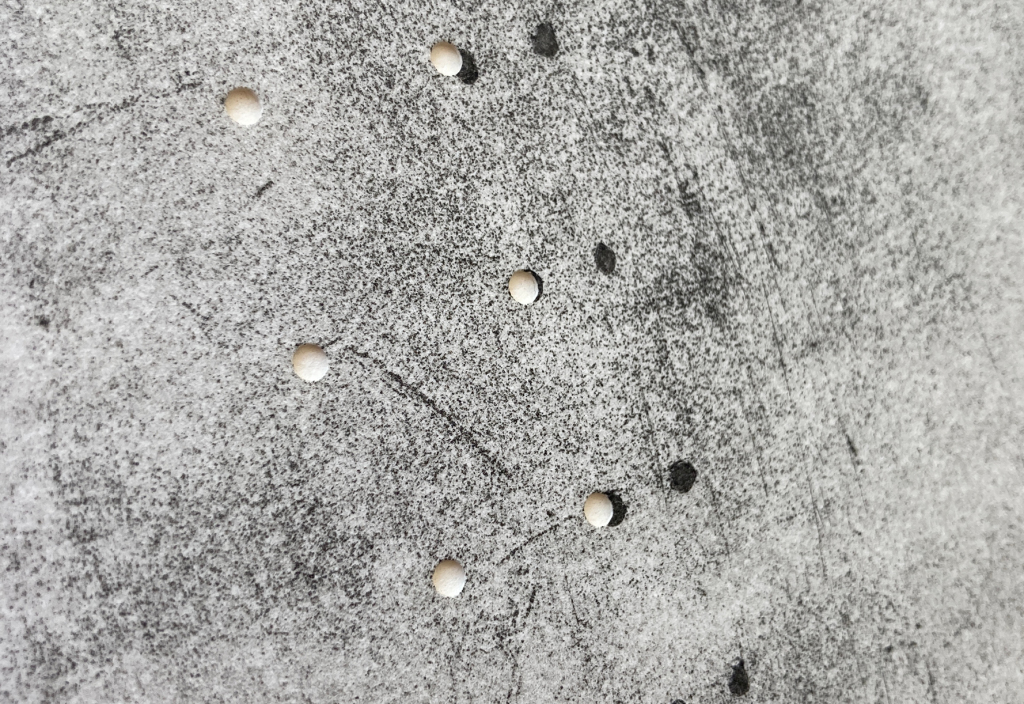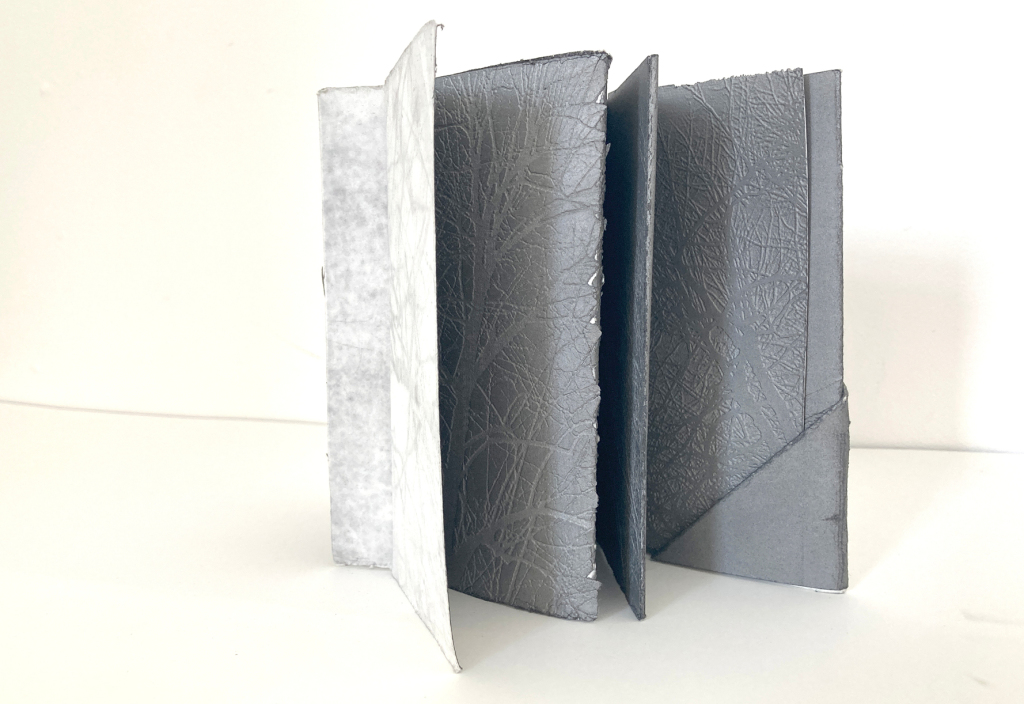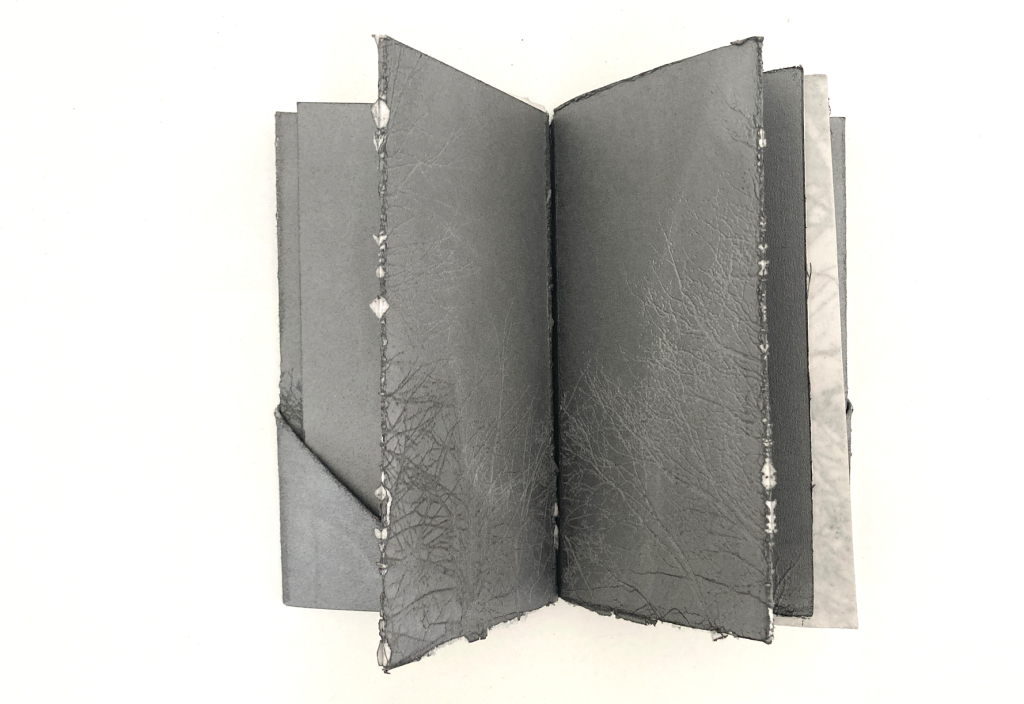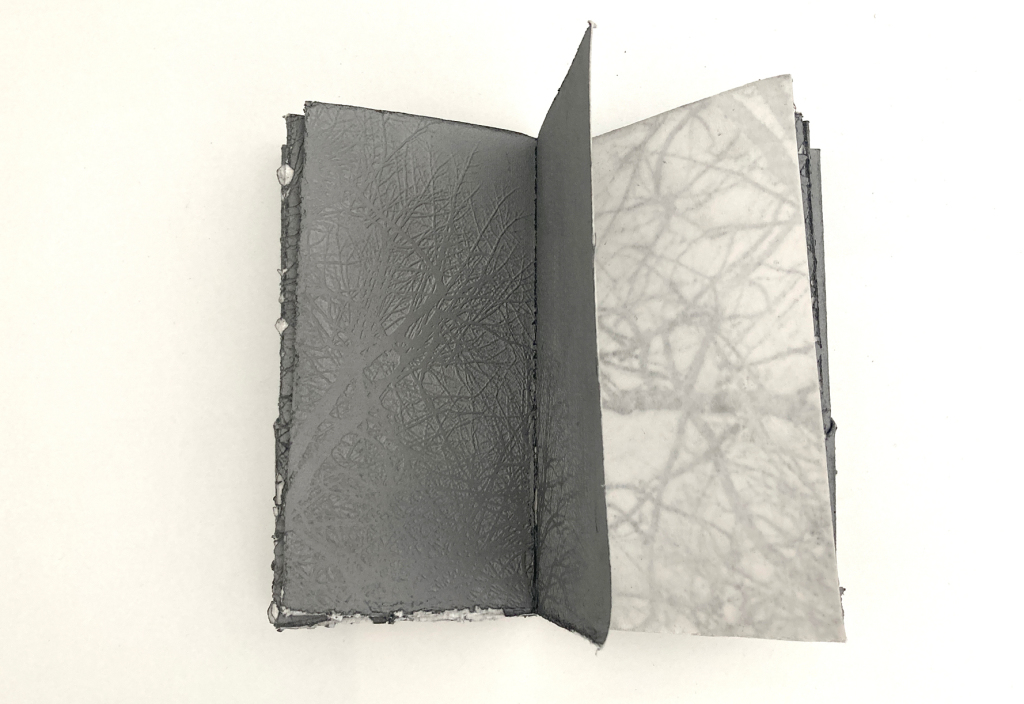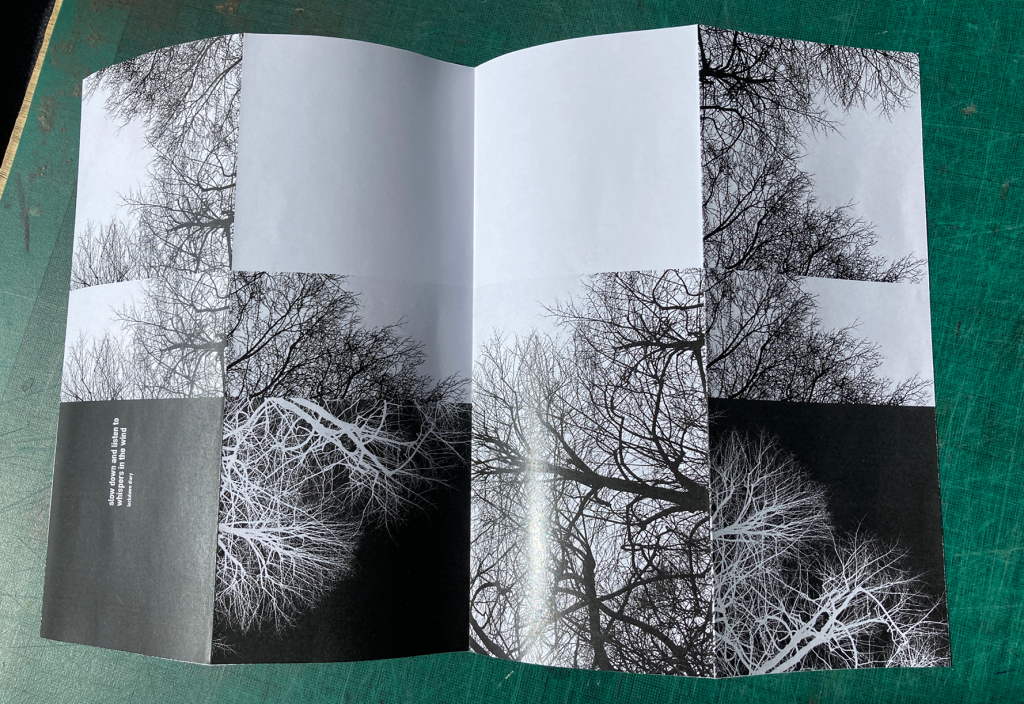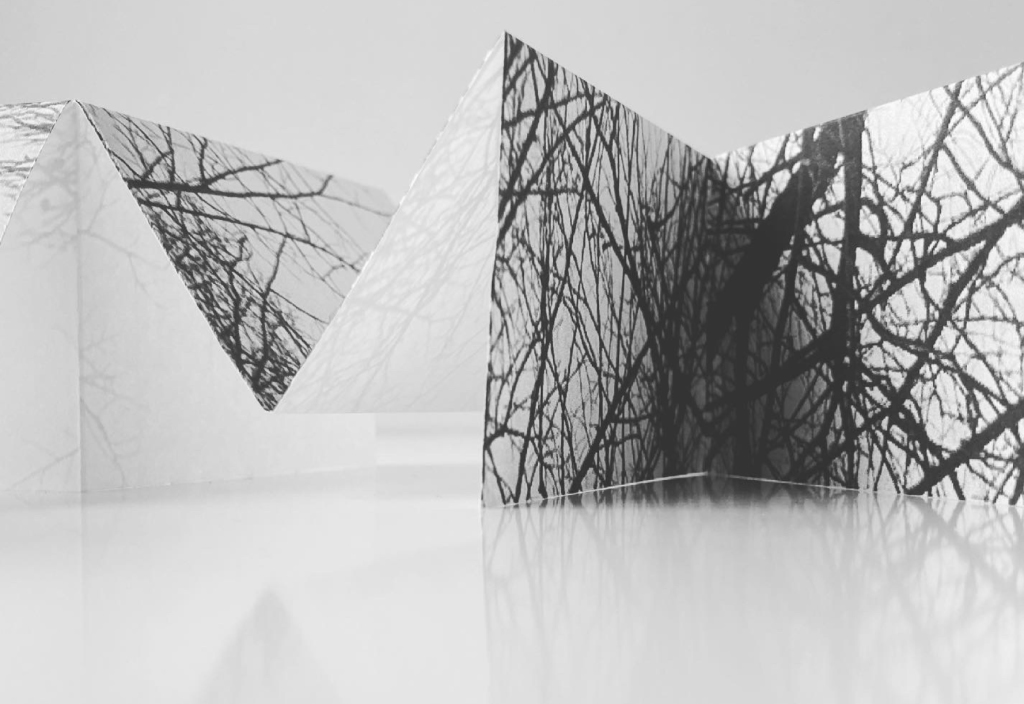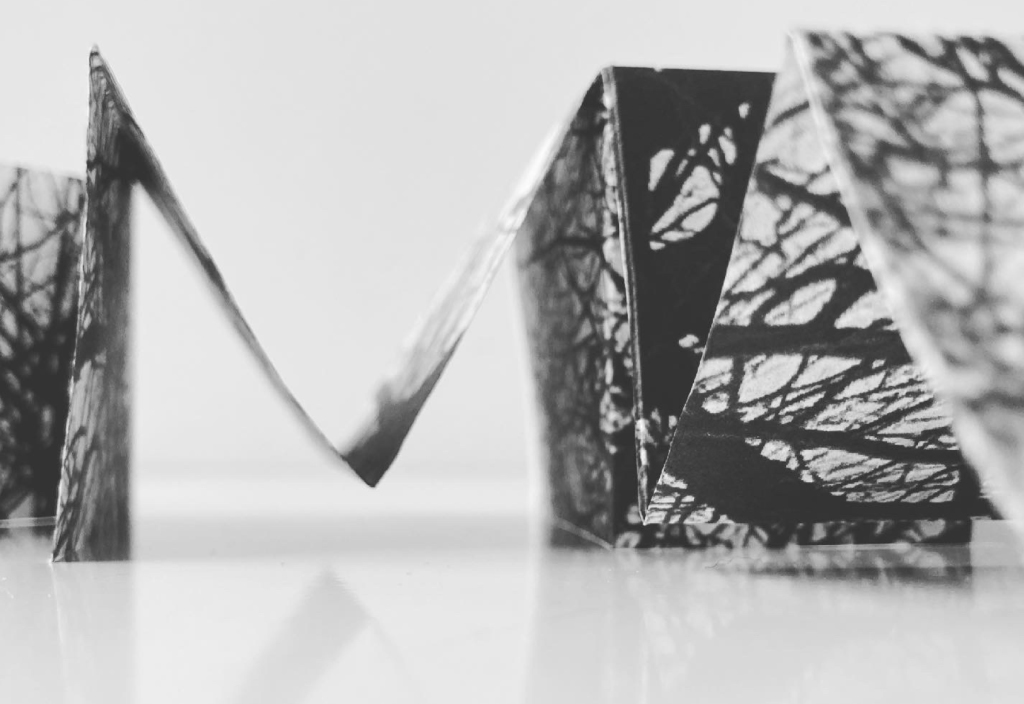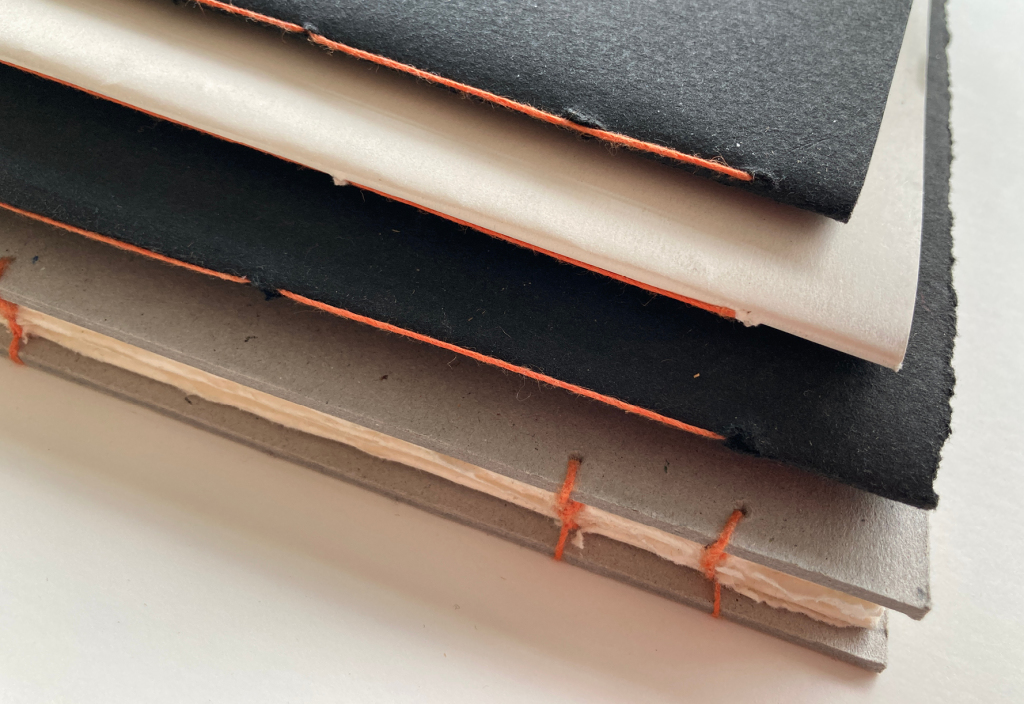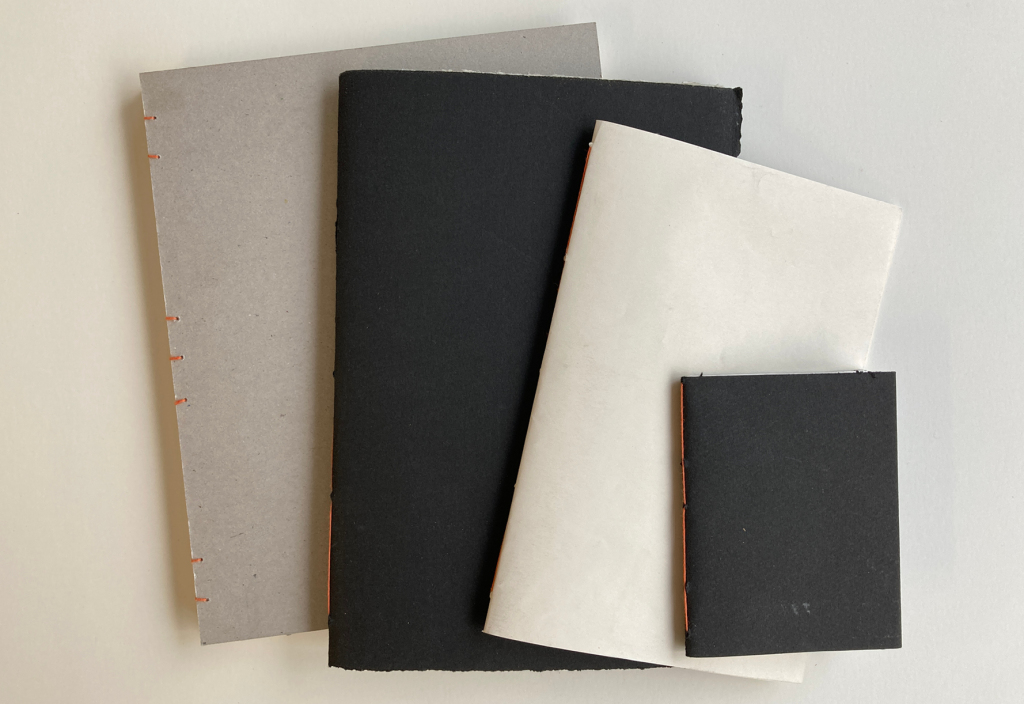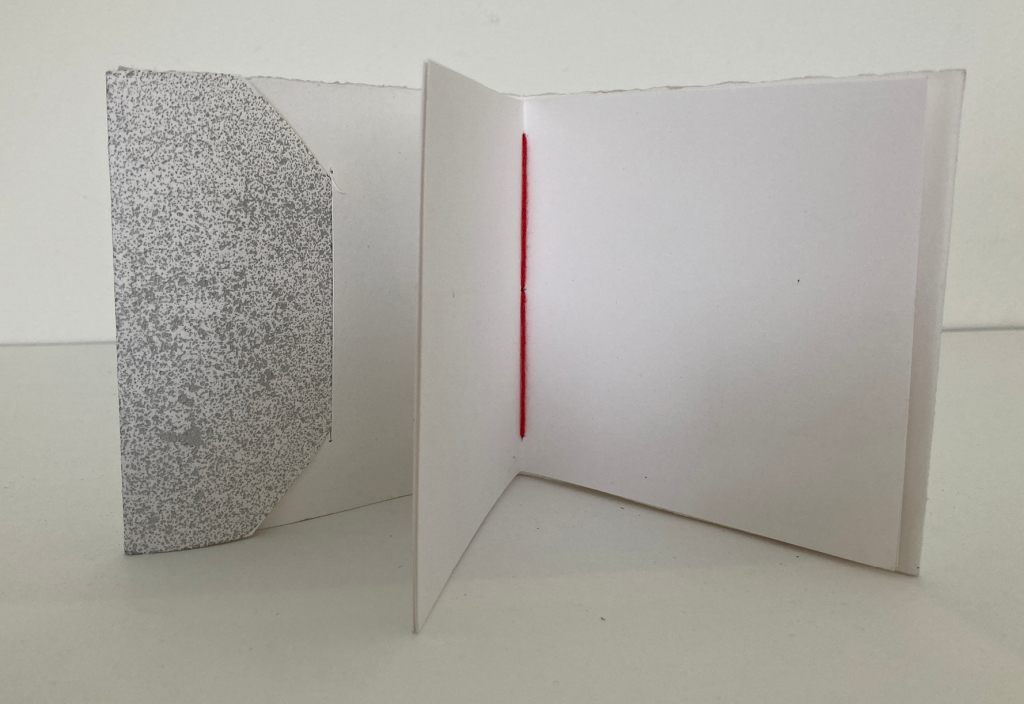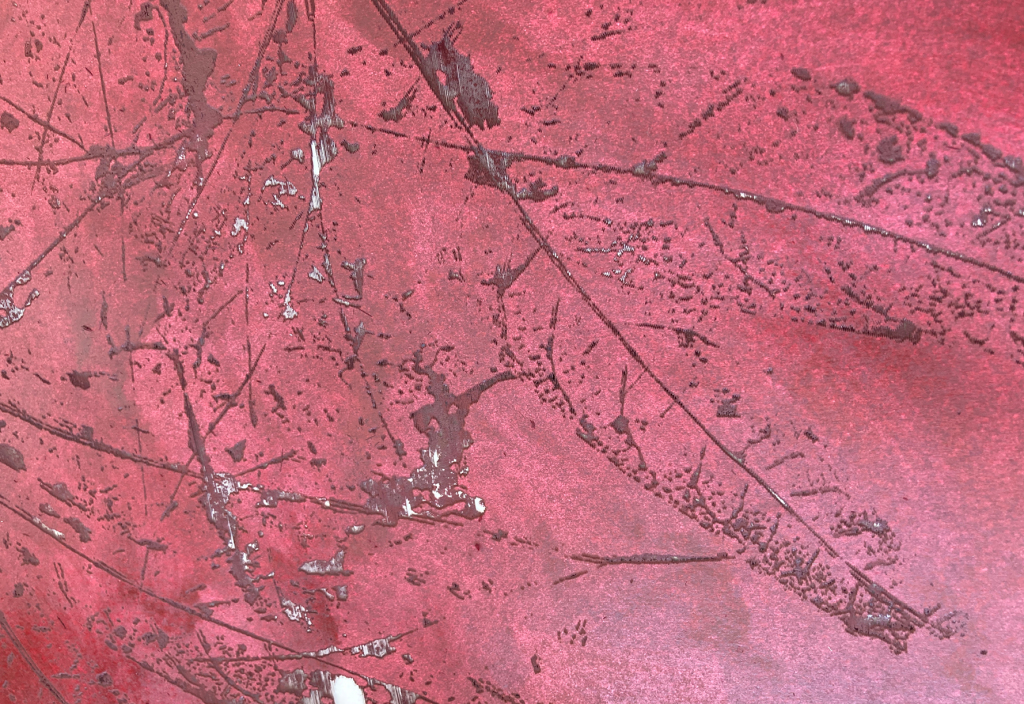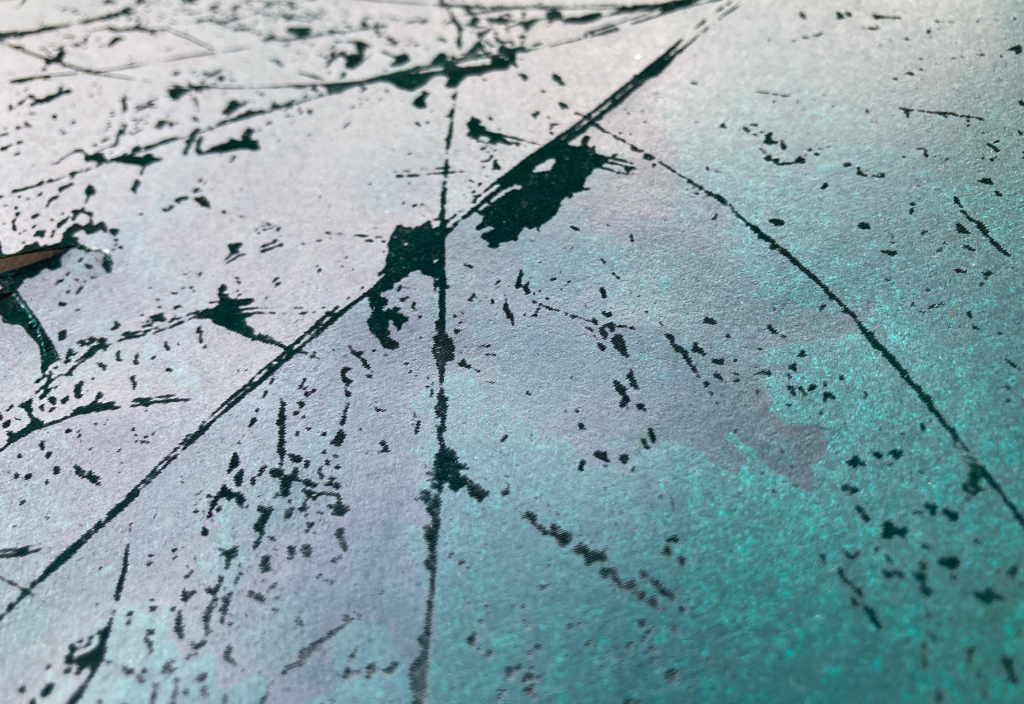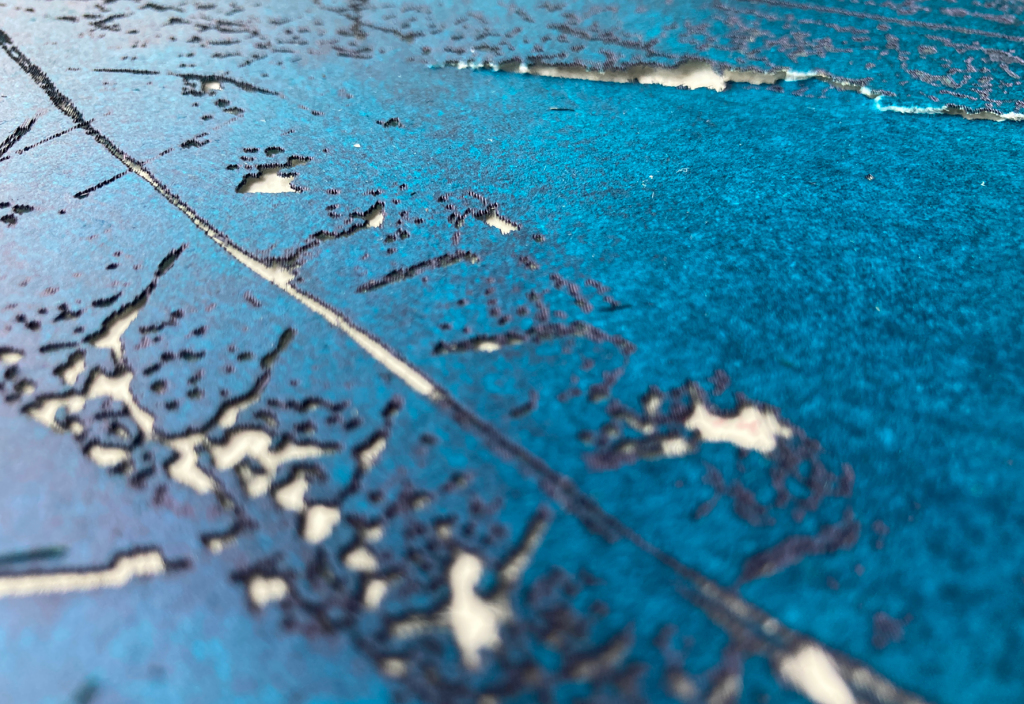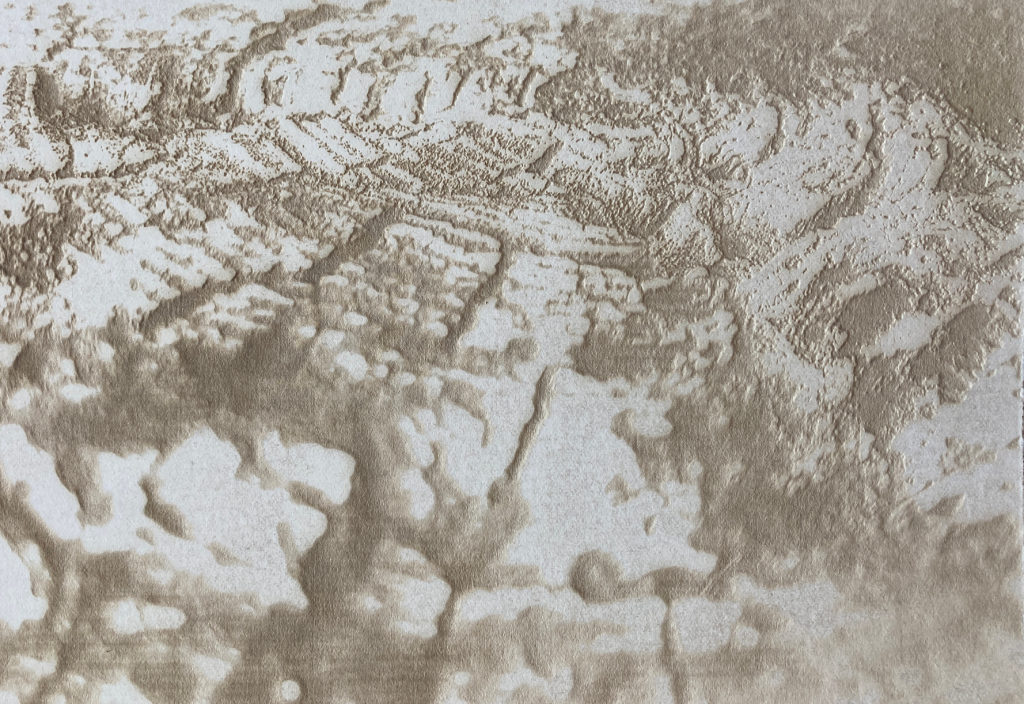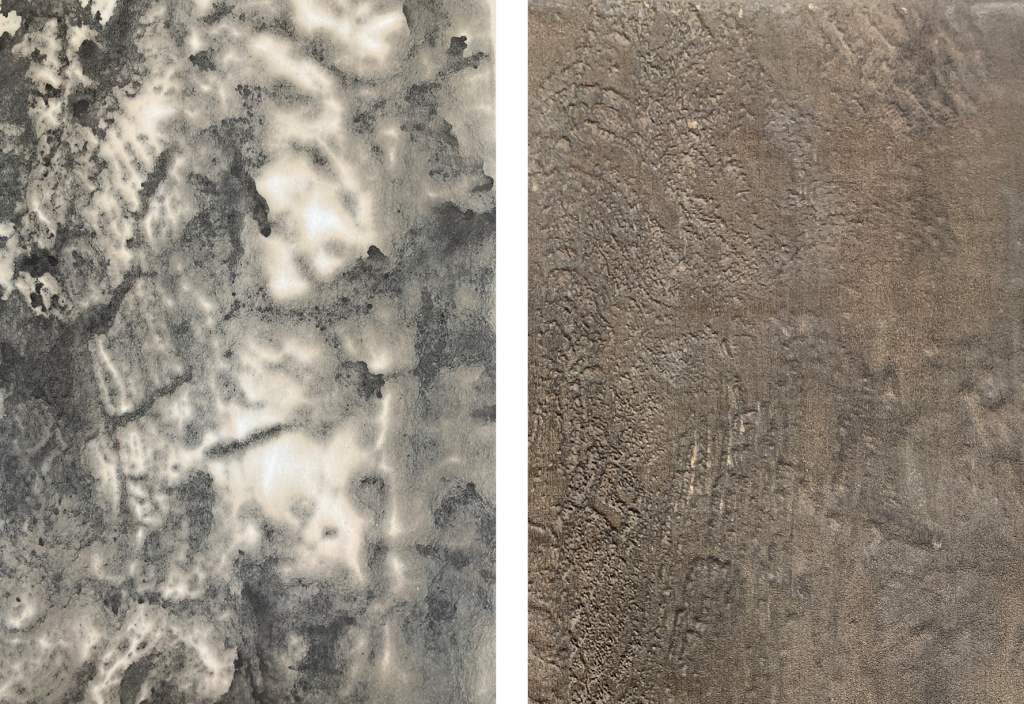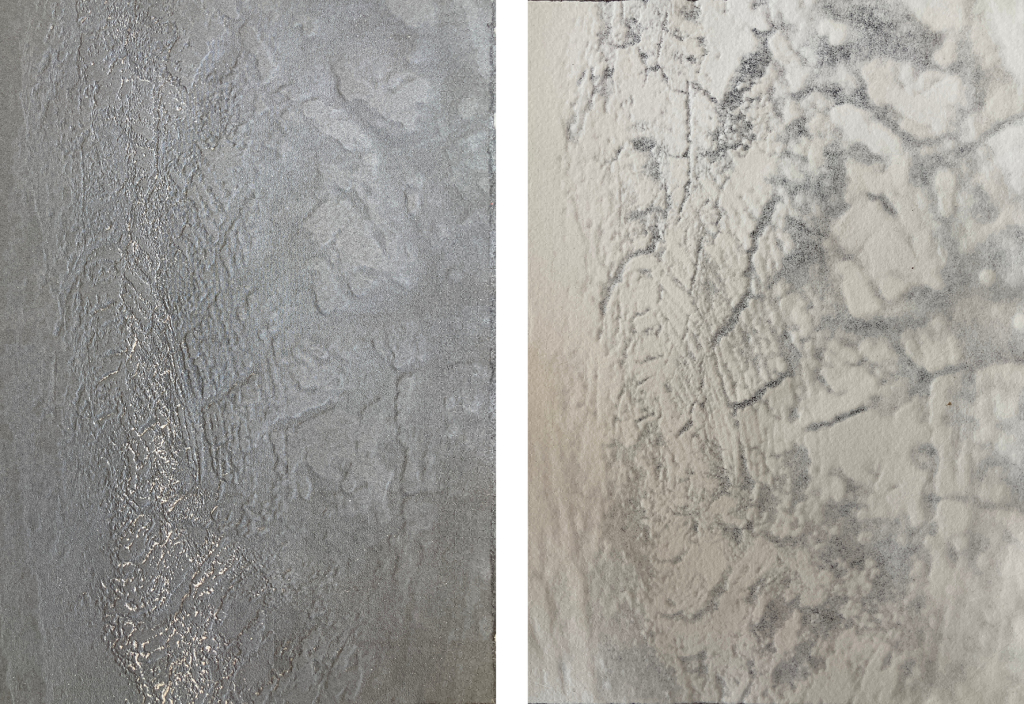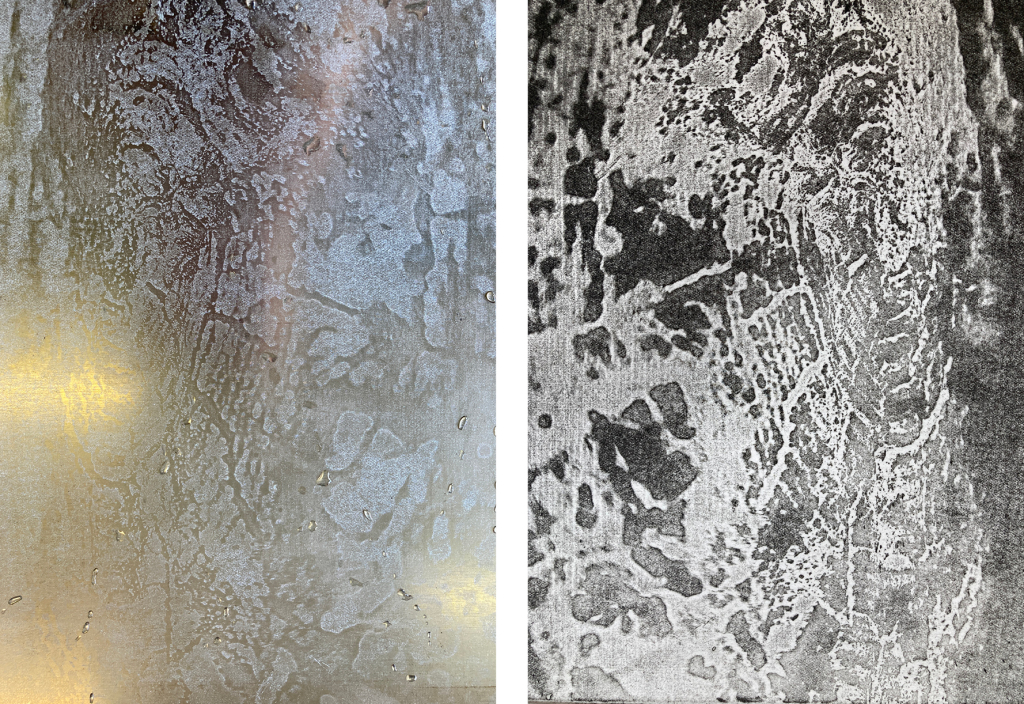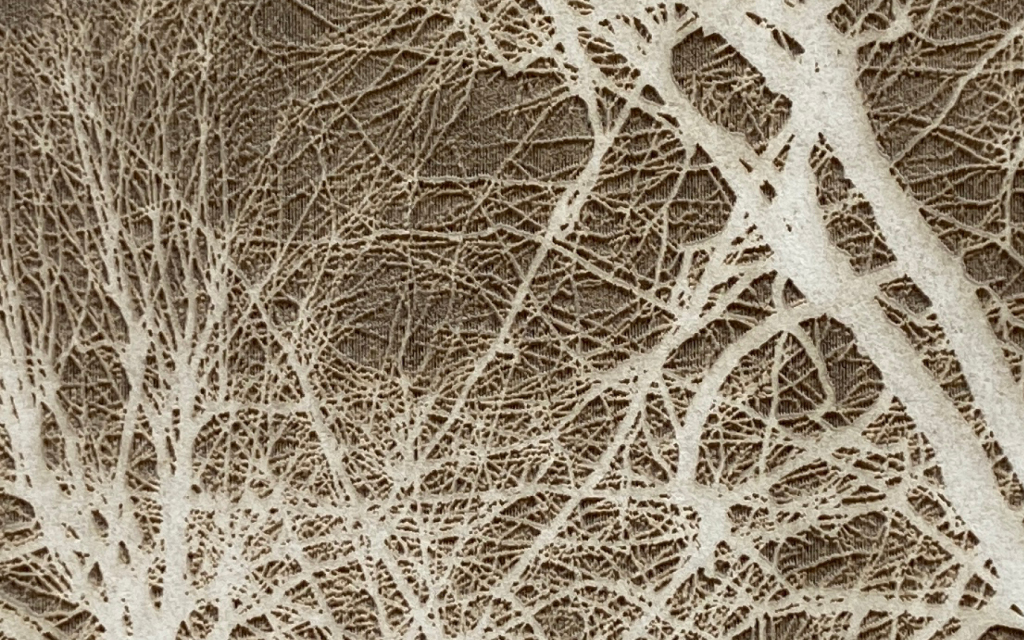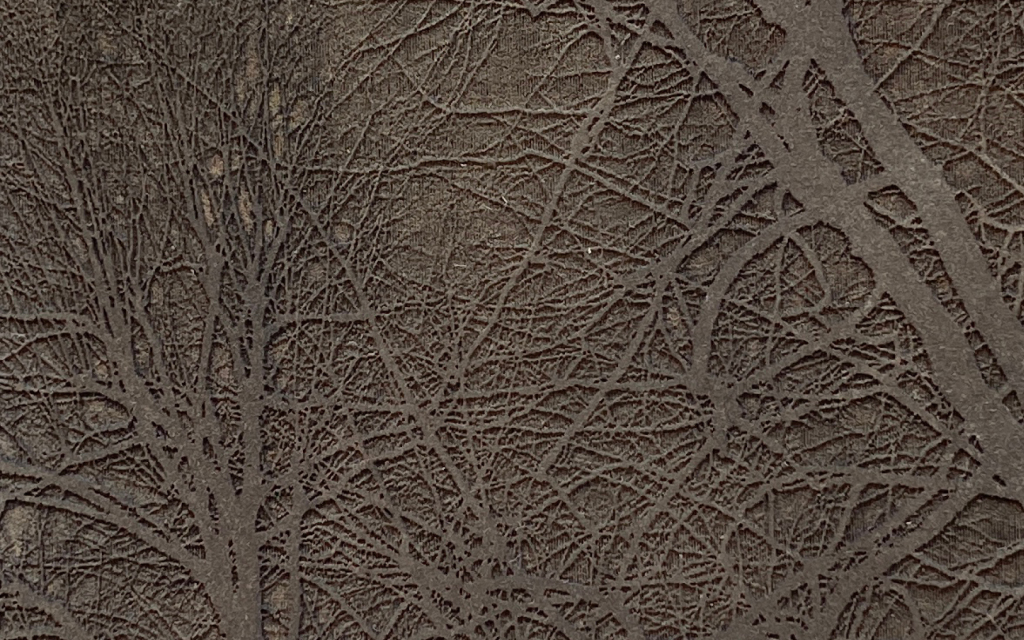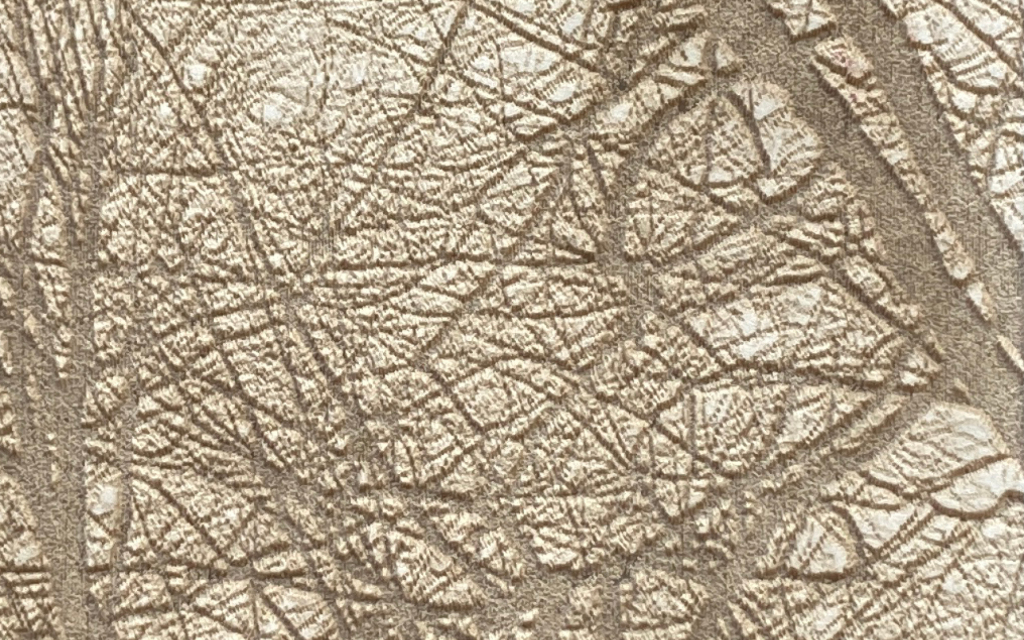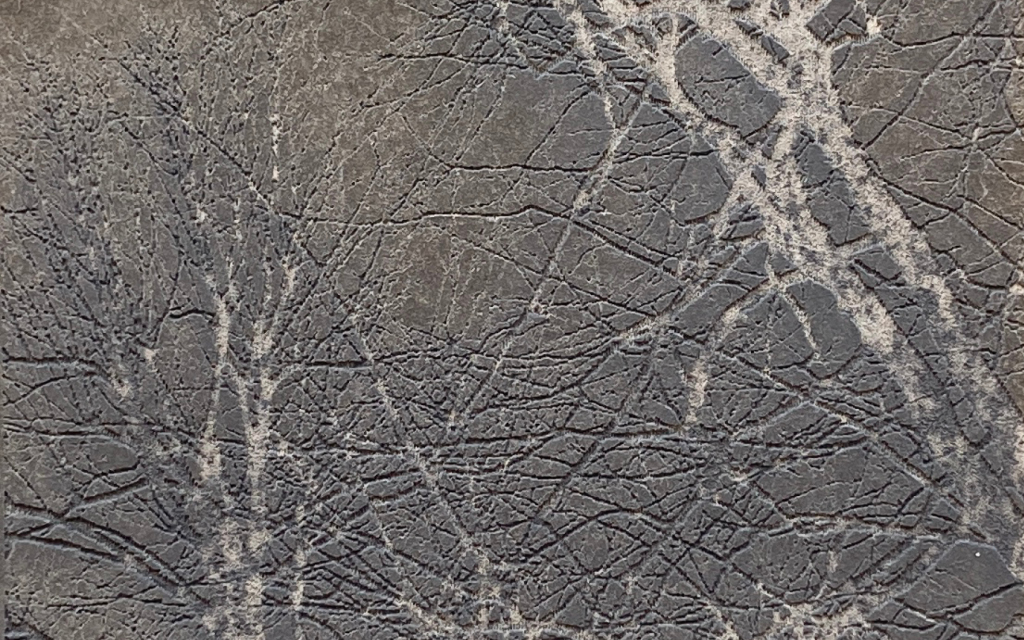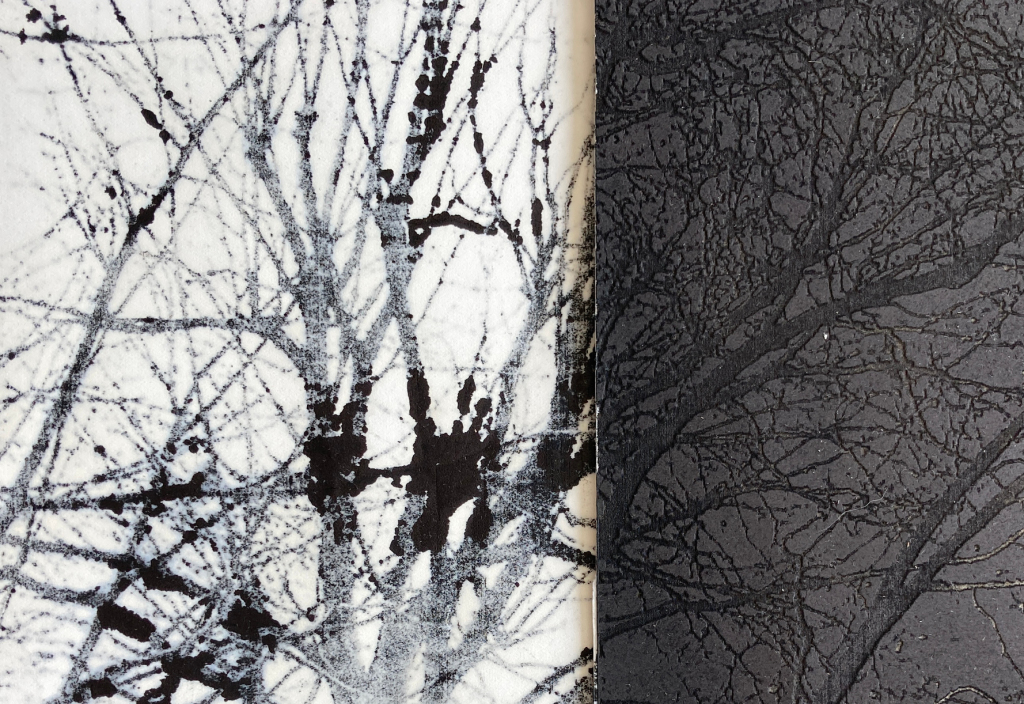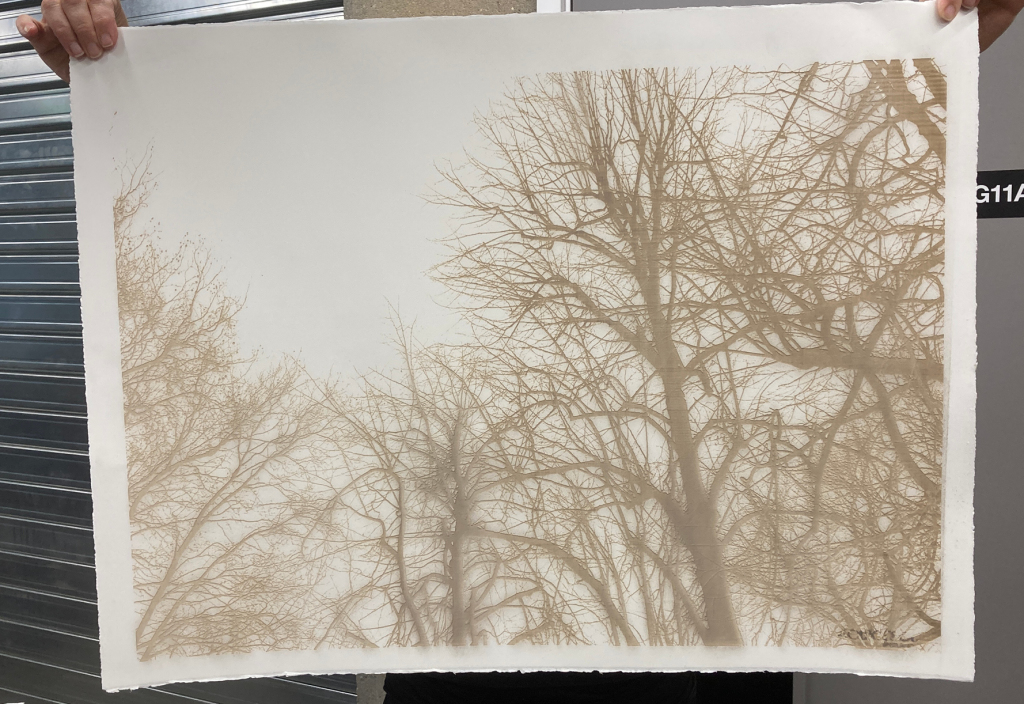ARTIST STATEMENT
ARTWORK AND PROCESS
RESEARCH AND
CRITICAL REFLECTION
CONTEXT
EXTERNAL RESSOURCES
AND PROFESSIONAL SKILLS
ONE PLACE THREE INTERPRETATIONS
I was really happy when Marta approached Gemma and me with a proposal to collaborate. We are interested in the same subjects and printmaking techniques, and therefore she suggested we pick a place and express different interpretations from the same starting point.
The chosen place is between Southwark and London bridges, where Gemma previously has worked in situ with her sound scape drawings.
I went there at low tide so I could go all the way down and stand on bottom of the river to take some photos and to make imprints directly on etching plates. Initially my intention was to make a photo etching on top of the imprints, but after talking to Jo I decided to make a double page spread. I see the work in process, not a finished work, and I think we will keep collaborating in Unit 3, exploring and interpreting more places.
Gemma and my work in the studio. Untitled: 76 x 56 cm each. The following photos are our location and my weather repport from the day I spend there and my plates in the water.
LIGHT AND LOOKING INTO EMPTINESS
As restrictions lifted I felt tempted to re-investigate the photos from my daily walks during lockdown. I looked at the images in a different perspective and noticed fragments in the photos with lots of sun and light. It is interesting how the same image evoke different feeling according to time, but also there is a sense of the unknown, emptiness and vulnerability where the light erase the image.
For our first silent crit I decided to print the images on very thin tissue paper, to emphasize the fragile and vulnerable atmosphere in the images. In addition, the transparency of the paper allow one image to occupy both sides of the paper like a reflection, just like the laser etched paper does.
However, my presentation was kind of weak in terms of size and my work will benefit from either going more busy with bits of tissue falling on the floor, or simplify it to be one large image installed on the wall in a way that emphasize the transparency and fragility of the image and the paper. I am most tempted to go forward with the latter.
Work for my silent crit. Title: Untitled. Size 350 x 500 mm (each image).
ALL THOSE NUMBERS
After the spring break UAL finally let us back into the workshops and personally I felt a great sense of relief, almost like I could breathe again after holding my breath for tree month. It made me think about the root of this situation, which of cause is the spread of the corona virus and the Covid-19 disease.
The third national lockdown was between 4 January and 8 March 2021, therefore the basis of this book is the daily and accumulated numbers of new cases, deaths and vaccinations. The numbers are the NHS statistics from the gov.uk homepage: https://coronavirus.data.gov.uk/details/cases.
In order to differentiate between daily and accumulated numbers I use two different techniques. Since daily numbers are more impermanent I laser cut them into the paper, whereas the accumulated numbers are etched into the same etching plate, hence the plate get darker and darker and emphasize the accumulation. Also, I used the back of a steel plate that I worked on before lockdown, because it carries traces of time before the third lockdown.
It is both scary and intersting how these numbers have been a main source of political decisions creating an uncertain and unpredictable situation for more that a year. Therefore, I decided to make a book using the turning of the pages as a timeline. Therefore, each spread sheet contains both the accumulated and daily numbers of one week, as shown below.
Spread and close-up of the Lockdown Diary, which is stil in process.
Title: Lockdown Diary. Size: 280 x 320 mm. (closed)
FOLDING AND STITCHING
Inspired by Clare Bryan’s talk Bookbinding Introduction, Graig Horsfall’s Practical Workshops on Book Arts and different books about book art from the library, I folded and stitched a few book. Some as mock-ups and some planned with images that forms correct double page spreads. I really enjoyed planning and folding the one-sheet-books and experimented with different sizes and papers.
The images below show my experiments with the transparency of laser etched paper to let one image occupy both sides of the paper, like a reflection or an echo. I will go into more detail about inspiration from other artists in the Reflection and Critical Thinking section.
A mix of laser cutting, graphite etching ink all planned and folded as a Franklin Fold.
A very simple boustrophedon one sheet folded book sculpture.
Simple and goptic stiching.
DRIED LEAFS FROM DAILY WALK DURING LOCKDOWN
Dried leafs are fascinating and a symbol of impermanence or rhythm of life orchestrated by a power larger than humans. Also the structure of dried leafs are fragile just like life itself, or impermanence. So I decided to laser cut imprints of dried leafs into paper in the hope they would create a nice pattern, which the did.
However, I realized the importance of the paper, because I laser etched these leafs into a paper with a hard surface, which did not absorb the etching ink when I tried to rub it into the paper. Instead it stayed on the surface.
The combination of the hard paper and the solid colors does not support the fragile look and feel I wanted and therefor this experiment never worked as a meaningful piece of art.
Dried leafs as laser etchings in different colors.
FRAGILE TIMES AND TECHNOLOGY
During unit 1 my work mainly focussed on Gaston Bachelard book The Poetics of Space, particularly his dualistic interpretation of space as inside and outside, which creates an alienation and hostility between the two. In unit 2 I continued this work, using photos from my daily walks during lockdown as a starting point.
Inspired by Dr. Johanna Love Perspective Talk Thoughts on Paper I decided to laser etch images into paper. At first I did a lot of experimentation with the same image, but different settings, so I could compare the results. These experiments have given me a good understanding of the interaction between the technology of the laser cutter, the digital image and the quality of the paper.
I am completely fascinated by the laser etched papers and how thin layers of fibre is strong enough hold the paper together. The fragility of the paper becomes a symbol of these fragile times caused by the pandemic, both on a personal and systematic level. Also, there is a dimension of time in the way the laser cutter slowly burn the paper.
However, the burnt color of the laser cutting process is very specific and obviously so I tested various ways of disguising the burn marks by applying etching ink or graphite to the paper. The images below shows different ways of burning and covering the paper. Also, the images are from my daily walk to Clapham Common, although they are more about place of refuge than a specific location.
Tests of an etching, colorations and a softground imprint of the etching (last image).
Tests of different etchings and colorations.
This piece will be shows at Copeland Gallery – see Artist Statement for more details.
